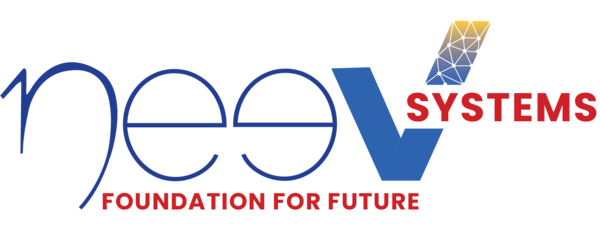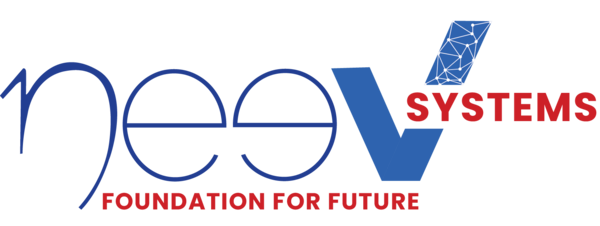Executive Summary
As Industry 4.0 technologies become standard infrastructure rather than competitive advantages, manufacturers must pivot toward Industry 5.0 to maintain market leadership. This shift moves beyond pure automation to emphasize human-machine collaboration, cognitive manufacturing, and sustainable operations.
The article explores how Industry 5.0 transforms manufacturing through cognitive systems, bio-inspired innovation, and mass personalization capabilities. Success requires a systematic approach focused on human-centric design and sustainable practices. Organizations that delay this transition risk falling behind as competitors reshape the manufacturing landscape through Industry 5.0 innovations. To lead this change in the Industry, Neev Systems can help you stay ahead of the curve.
Key Takeaways
- Transform manufacturing through human-machine collaboration. Focus on augmenting human capabilities rather than replacing them.
- Make sustainability your competitive edge. Embed green initiatives and circular economy principles into your core operations.
- Start small, but think big. Begin with pilot programs in critical areas while building a comprehensive Industry 5.0 roadmap.
- Act now or risk falling behind. Early adopters are gaining market advantages through cognitive manufacturing and mass personalization capabilities.
Are you ahead of the curve with your Industry 4.0 implementation? If not, here’s a wake-up call.
That automated factory floor you’re so proud of? It’s becoming as common as assembly lines were in the 20th century.
The data dashboard giving you real-time insights across sales, supply chains, and operations? Advanced data analytics, once groundbreaking, is fast becoming a baseline tool, much like accounting software did in the late 90s.
The real race isn’t about implementing Industry 4.0 anymore but who will lead the charge into Industry 5.0.
While Industry 4.0 brought us data-rich environments and automation, it still falls short in key areas. Manufacturers often struggle with adapting their workforce, integrating sustainable practices, and creating truly flexible production lines. Industry 5.0 fills the gaps of Industry 4.0 by integrating human expertise with automation, boosting adaptability, and embedding sustainable practices. It’s a shift toward a responsive, future-ready manufacturing environment that meets today’s demands for flexibility and resilience.
Industry 5.0 shows the way as companies embrace smart manufacturing solutions and strive for more agile and responsive operations.
The Industry 4.0 Chapter: Yesterday’s Innovation is Today’s Standard
Remember when cloud computing and IoT sensors felt cutting-edge? When predictive maintenance was the talk of every manufacturing conference? Those days are long gone. Walk into any modern factory today, and you’ll see these technologies aren’t innovative anymore; they’re essential infrastructure, like electricity and internet connectivity.
Some of the Industry 4.0 features that are now mainstream include:
Data & Analytics
Real-time data collection through IoT sensors has become as fundamental as power supply in modern factories. Manufacturing Execution Systems (MES) now operate exclusively in the cloud, processing millions of data points every minute. The ability to collect, analyze, and act on production data in real time isn’t a competitive advantage anymore but an essential requirement for staying in business.
Automation Solutions
Integrating robotics into manufacturing processes has moved far beyond basic pick-and-place operations. Collaborative robots work seamlessly alongside human operators, while automated guided vehicles navigate factory floors autonomously. These systems communicate with each other and adapt their operations based on real-time production needs, creating fluid, responsive production environments.
Quality & Maintenance
AI-powered inspection systems have largely replaced manual quality checks, offering consistent, round-the-clock monitoring with accuracy levels exceeding human capabilities. Predictive maintenance is no longer a premium feature but comes standard with modern equipment, using advanced algorithms to forecast and prevent downtimes before they occur.
Digital Integration
Digital twins have evolved from experimental technology to essential tools for process optimization and operator training. ERP systems provide real-time visibility across global supply chains, while remote monitoring and control capabilities have become standard features rather than premium add-ons.
Advanced Manufacturing
Additive manufacturing has transcended its prototyping origins to become a legitimate production technology. Smart tooling with embedded sensors continuously monitors and adjusts performance, while flexible manufacturing cells allow for rapid product changeovers without significant downtime.
The truth is uncomfortable but clear. If you’re still celebrating your Industry 4.0 transformation, you’re admiring last season’s trophies while your competitors are playing a whole new game.
Your Competition Isn’t Standing Still. Are You?
Various industries have already embraced Industry 5.0. The global Industry is growing at a CAGR of 31.25% from 2024 to 2033 and is projected to reach a market value of USD 822 billion by 2033.
But what is Industry 5.0 all about? Here are the cornerstones of Industry 5.0.

Why Should You Implement Industry 5.0 in Manufacturing
All this sounds well and good but what does it mean for you? A question that comes to everyone’s mind is:
How is it helping ME?
Let’s look at some of the reasons why everyone in the manufacturing industry is raving about Industry 5.0:

Optimizing Operations with Effective Real-time Insights
A leading global manufacturer faced challenges extracting real-time insights from their Oracle ERP system, hindering effective supply chain and order management. Data silos, limited scalability, and system integration complexities impeded operations.
Neev Systems implemented a three-pronged solution:
- HevoData for automated ETL processes
- Snowflake for scalable cloud-based data warehousing
- Tableau for dynamic reporting and analytics.
The integration delivered significant benefits, including real-time inventory visibility, a 360-degree opportunity fulfillment overview, and automated data workflows. Key stakeholders, including sales representatives and procurement managers, gained access to timely, actionable insights. Sales reps could track order status in real time, while procurement teams could analyze order trends for strategic sourcing.
The solution enabled seamless scalability and enhanced data governance, ultimately driving more informed decision-making across the organization.

Industry 5.0 isn’t the future—it’s the now.
Implementing Industry 5.0: A Strategic Roadmap for Future-Ready Manufacturing
The transition to Industry 5.0 involves not only technology adoption but fundamentally reimagining your manufacturing philosophy.
Following a structured approach can make this transition both manageable and effective.
Start with Human-Centric Design
Begin by redefining workspaces and processes with human operators at the center. Rather than focusing solely on automation, identify areas where human creativity and machine efficiency can complement each other. Implement augmented reality systems and collaborative robotics that enhance human capabilities rather than replace them. Create interfaces that make complex data accessible and actionable for operators.
Build on Your 4.0 Foundation
Leverage your existing Industry 4.0 infrastructure as the launching pad for 5.0 capabilities. Upgrade your IoT networks to support edge computing and real-time decision-making. Enhance your data analytics platforms with cognitive computing capabilities that can learn from human experts. Ensure your cloud infrastructure can handle the increased demands of AI-driven processes.
Implement in Phases
Start with pilot programs in high-impact areas:

Focus on Sustainability Integration
Make sustainability a core metric in your implementation strategy. Install real-time environmental impact monitoring systems. Implement AI-driven energy optimization. Design processes that minimize waste and maximize resource efficiency. Consider implementing blockchain for transparent sustainability tracking.
Building a Sustainable Future with Digital Transformation
Clients nowadays are putting heavy emphasis on sustainability. When faced with emerging competition in the sustainable building sector, a 75-year-old architectural products manufacturer known for prestigious projects like One World Trade Center needed to showcase its strong environmental credentials while modernizing operations. Despite having an impressive sustainability track record, the company struggled to effectively communicate this to key stakeholders like architects and facility managers.
The solution came through the implementation of Oracle Cloud solutions, combining advertising and customer experience with Fusion Cloud ERP. This unified platform enables seamless management of marketing campaigns targeting sustainability-conscious customers while streamlining all operations from online sales to production. Sales teams and customers now have a single interface to configure and order environmentally-friendly building products.
The transformation delivered dual benefits. It enhanced the ability to market their sustainable products while simplifying business processes through automated order processing and inventory management. This helped position the company firmly in the growing sustainable building market.
The Decision Point: Your Future Starts Now
The question isn’t whether manufacturing will embrace Industry 5.0 – it’s already happening. The question is whether you’ll be leading the charge or playing catch-up. Every day you wait, your competitors pull further ahead.
Think about where manufacturing was just five years ago. Now imagine where it will be five years from now. The pioneers of Industry 5.0 aren’t just preparing for that future but creating it.
The choice is yours. Will you be a leader in this new manufacturing era, or will you be playing catch-up for the next decade? Don’t wait until your competitors force your hand. Partner with Neev Systems to transform your manufacturing operations into a cognitive, sustainable powerhouse.
Contact Neev Systems today to schedule a consultation and discover how we can help you lead the manufacturing revolution.

Headstart Your Industry 5.0 Journey

Sitaram Pothula
With 22+ years of IT experience, Sitaram combines technical expertise with strategic leadership. He has led engineering teams and delivered solutions across BFSI, telecom, and healthcare. Sitaram excels in aligning technology with business goals to drive innovation and efficiency.


